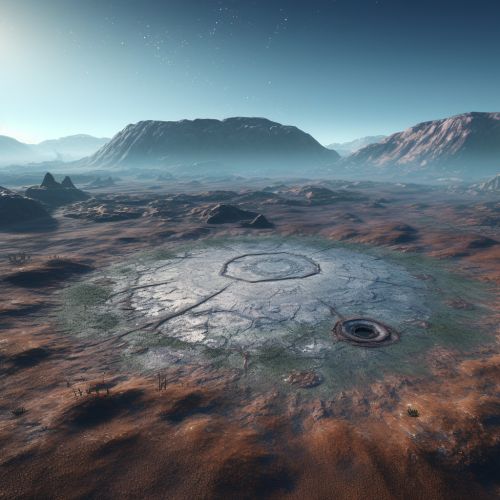The Dynamics of Planetary Impact Craters and Geological History
Introduction
Planetary impact craters are the result of collisional events between celestial bodies. These events, which can involve asteroids, comets, or meteoroids striking a planet or moon, leave behind a unique geological imprint. The study of these impact craters provides valuable insights into the dynamics of these collisions and the geological history of the impacted body.


Formation of Impact Craters
The formation of impact craters begins with a high-velocity collision between a planet and a smaller celestial body. This collision releases a tremendous amount of energy, causing a shock wave to propagate through the planet's surface. The shock wave excavates a cavity, ejecting material from the impact site and forming a transient crater. The size and shape of this crater depend on the kinetic energy of the impactor, its angle of incidence, and the properties of the impacted surface.
The transient crater then undergoes a process known as crater modification, where it evolves into a more stable form. This process can involve the collapse of the crater walls, the uplift of the crater floor, or the formation of a central peak or ring. The final form of the impact crater is determined by the interplay of these modification processes and the properties of the impacted surface.
Types of Impact Craters
Impact craters can be classified into two main types: simple and complex.
Simple craters are typically small, with a depth-to-diameter ratio of about 1:7. They have a bowl-shaped morphology, with a smooth floor and a raised rim. Simple craters are common on the Moon and other bodies with a thin lithosphere.
Complex craters are larger and have a more complex morphology. They typically have a central peak or ring, terraced walls, and a flat floor. Complex craters are common on planets with a thick lithosphere, such as Earth and Mars.
Impact Craters and Geological History
Impact craters provide a window into the geological history of a planet. By studying the distribution, size, and morphology of impact craters, scientists can infer the age and geological processes of the impacted surface.
For example, a heavily cratered surface suggests an old age and a lack of recent geological activity. Conversely, a surface with few craters indicates a young age or recent geological activity that has erased older craters.
Furthermore, the study of impact craters can reveal information about the impactor and the conditions of the impact event. For instance, the presence of shatter cones, planar deformation features, and other shock metamorphic features can provide evidence of a high-velocity impact event.
Impact Cratering on Different Planetary Bodies
The process and effects of impact cratering can vary significantly between different planetary bodies. This is due to differences in factors such as gravity, atmospheric pressure, and surface composition.
For instance, on bodies with a thick atmosphere, such as Venus or Titan, the atmosphere can slow down and fragment the impactor before it reaches the surface. This can result in a different crater morphology compared to bodies with a thin or no atmosphere.
Similarly, the presence of ice or water on a planetary surface can influence the formation and modification of impact craters. For example, on icy moons like Europa or Enceladus, impact craters can undergo a process known as viscous relaxation, where the crater gradually relaxes back to the original surface level due to the flow of the underlying ice.
Conclusion
The study of planetary impact craters provides valuable insights into the dynamics of collisional events and the geological history of the impacted body. By examining the size, distribution, and morphology of these craters, scientists can infer the age and geological processes of the impacted surface, as well as the conditions of the impact event. Furthermore, the comparison of impact craters across different planetary bodies can shed light on the diverse processes and conditions that shape these celestial landscapes.
